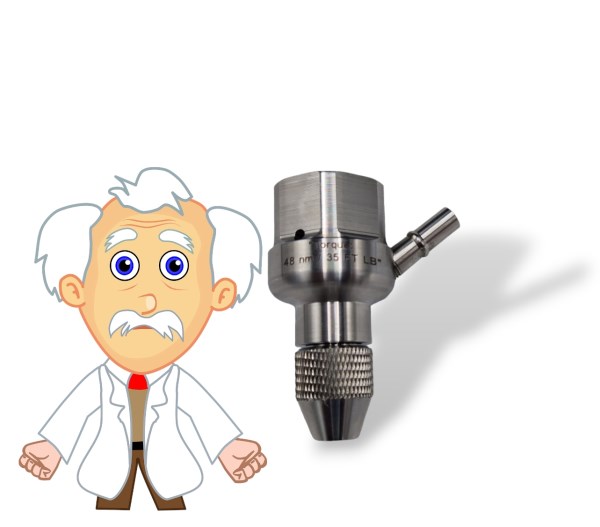Ask Doctor Waterjet

Common Waterjet pump issues – and how to fix them
In metalworking and manufacturing, you’ll find that waterjet cutting systems are widely used tools. They provide precision and versatility, cutting through a variety of materials efficiently.
While waterjets are robust, their pumps are complex components that require regular attention to ensure consistent performance. Neglecting maintenance can lead to unexpected downtime and increased repair costs.
Common problems with waterjet pumps
Waterjet pumps operate under extremely high pressure, often exceeding 60,000 psi, which places significant stress on internal components. One frequent problem is cavitation, a condition where vapor bubbles form in the pump fluid and collapse. This results in damage to seals, plungers, and valves. Cavitation typically occurs when water supply is insufficient or contains air bubbles, often due to blocked intake filters or low water pressure.
Another common issue is worn plungers and seals. Over time, continuous operation causes wear that can result in leaks, pressure drops, or fluctuating cutting performance. Signs of worn seals include sudden drops in cutting efficiency, unusual pump noises, and visible water leakage. Regular inspection and timely replacement of worn parts are essential to prevent larger failures.
Pump overheating is also a concern. Operating a waterjet pump without adequate cooling can damage critical components. Cooling issues may arise from clogged heat exchangers, low coolant levels, or blocked water lines. Operators should monitor system temperatures and perform routine checks on cooling systems.
Troubleshooting and fixing waterjet pump issues
Addressing waterjet pump problems often begins with preventive maintenance. Daily visual inspections of seals, valves, and hoses can reveal minor leaks or signs of wear before they escalate. Monitoring pressure gauges and flow rates helps detect irregularities that might indicate failing components.
Replacing worn parts with high-quality waterjet spare parts is critical. Using reliable components ensures compatibility and preserves pump efficiency. This includes high-pressure seals, plungers, valves, and O-rings. Regularly scheduled part replacement, based on manufacturer recommendations, extends the life of your pump and maintains consistent cutting quality.
Proper water quality is another key factor. Impurities such as minerals, debris, or air bubbles can accelerate wear and contribute to pump failure. Installing filtration systems and checking water supply regularly minimizes risk. Additionally, correct lubrication practices prevent friction-related damage to moving components.
Pump operators should also pay attention to abrasive material flow. In abrasive waterjet systems, inconsistent delivery of garnet or other abrasives can place uneven stress on the pump and cutting head, leading to premature wear. Cleaning abrasive lines and checking for blockages should always be part of the routine maintenance.
Preventive measures to maintain efficiency
A structured maintenance schedule is the best way to reduce waterjet pump failures. Daily, weekly, and monthly tasks should be clearly defined.
Daily tasks include visual inspections, checking for leaks, and verifying pressure readings. Weekly and monthly tasks should cover more detailed component checks, lubrication, and replacement of critical parts.
Training personnel in proper waterjet operation is equally important. Operators who understand the impact of pressure adjustments, correct handling of parts, and water quality management are better equipped to prevent damage.
Documenting all maintenance activities and part replacements allows for trend analysis, helping identify potential weaknesses before they cause system downtime.
Monitoring pump performance over time provides insight into long-term trends. By logging pressures, flow rates, and maintenance activities, operators can predict when certain components might need replacement. This ensures both optimizied performance and cost-efficiency. Using recommended waterjet spare parts by the manufacturer ensures reliability and avoids compatibility issues that could compromise the pump.
Keep your waterjet cutting system running – contact us
Maintaining a waterjet pump requires a combination of preventive care, timely replacement of worn components, and monitoring water quality. Following proper routines ensures reliable water cutting performance and minimizes costly downtime.
For expert advice, genuine waterjet spare parts, and professional support, please contact us. Our team is ready to help keep your waterjet system operating at peak efficiency for years to come.